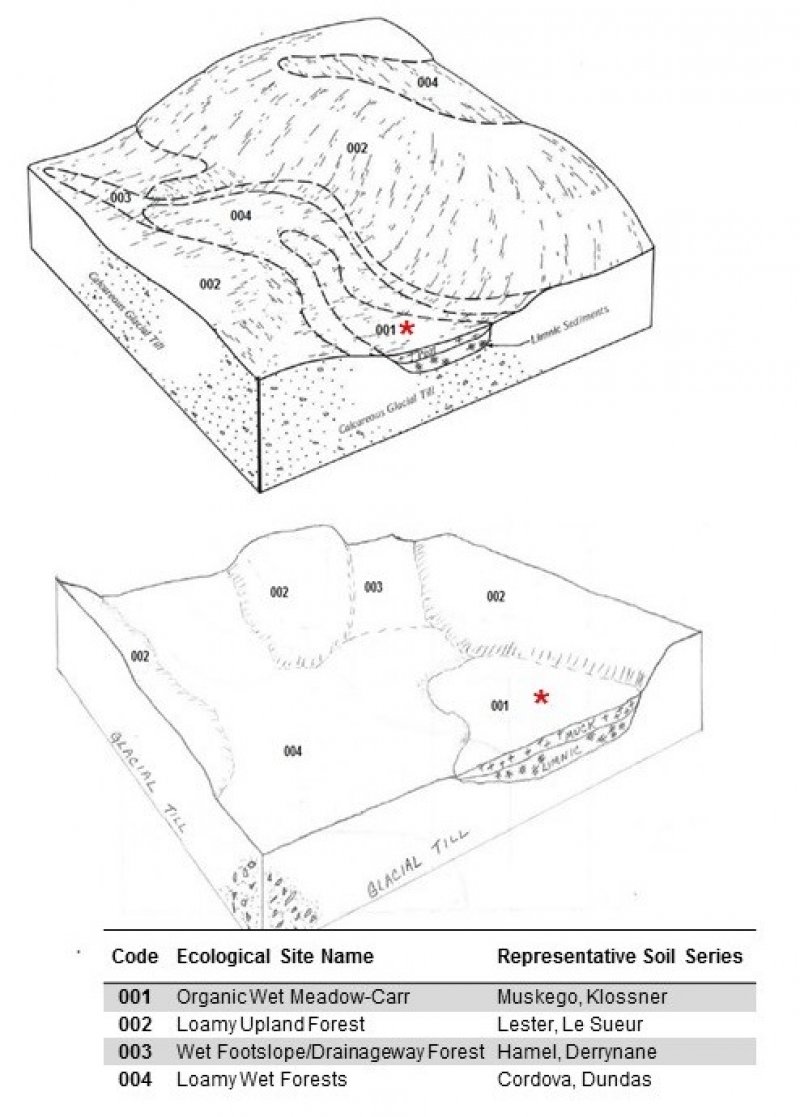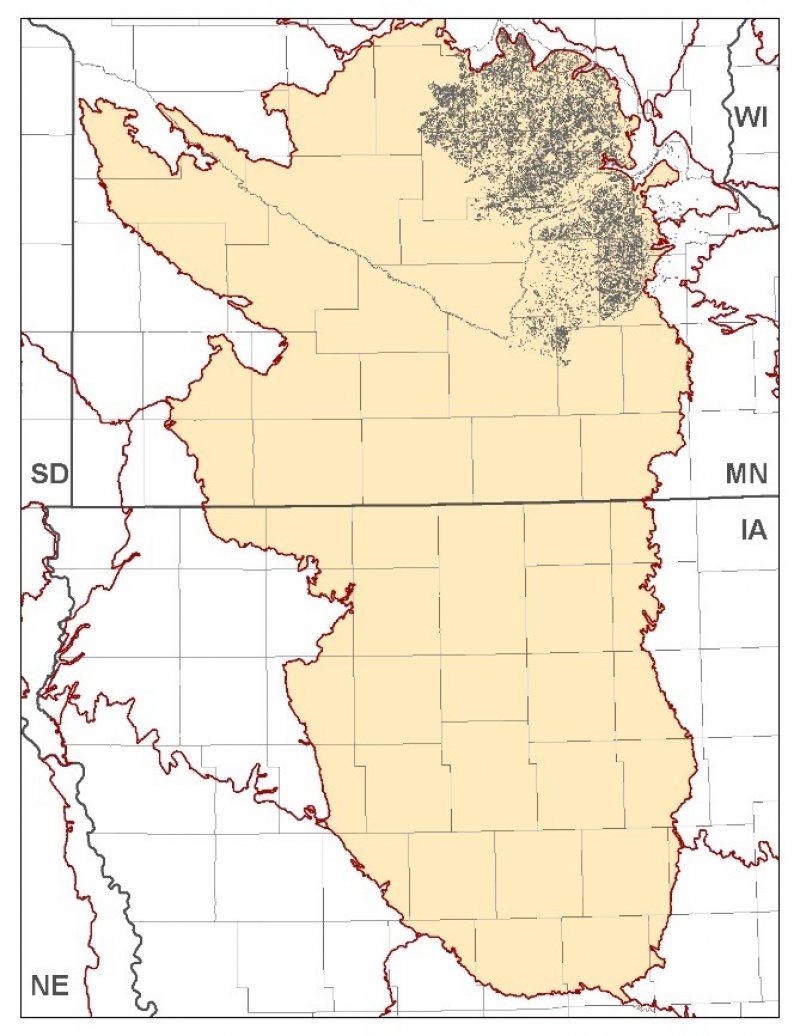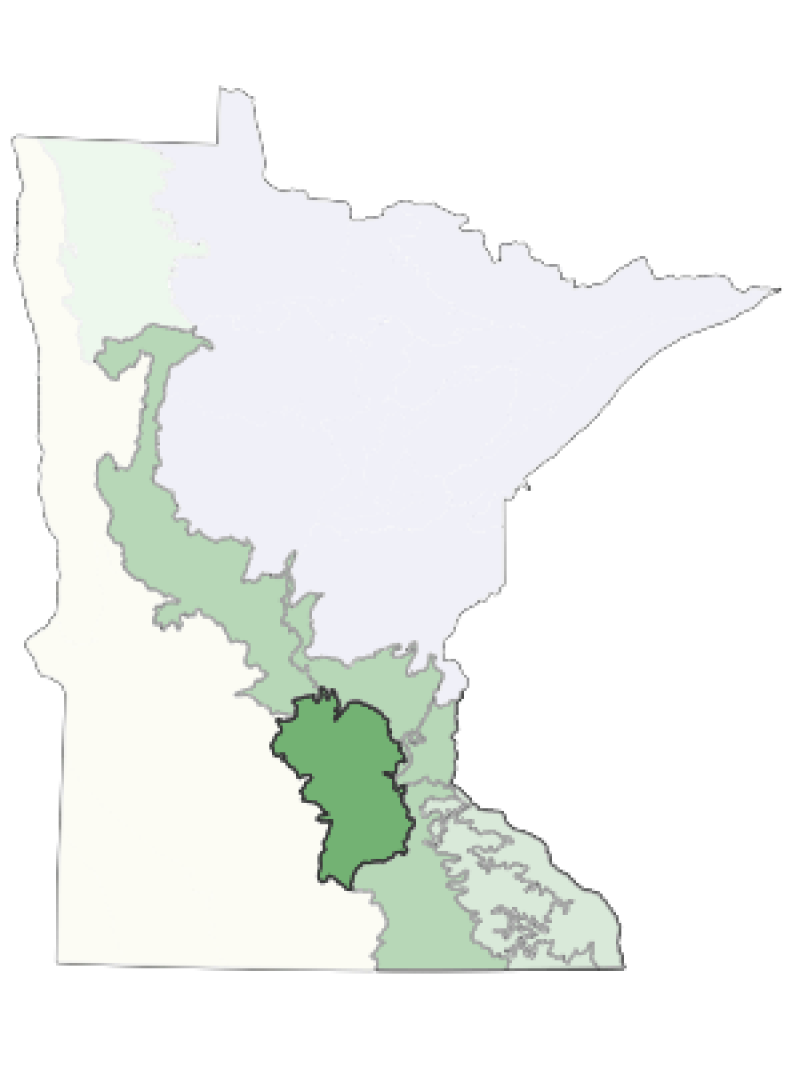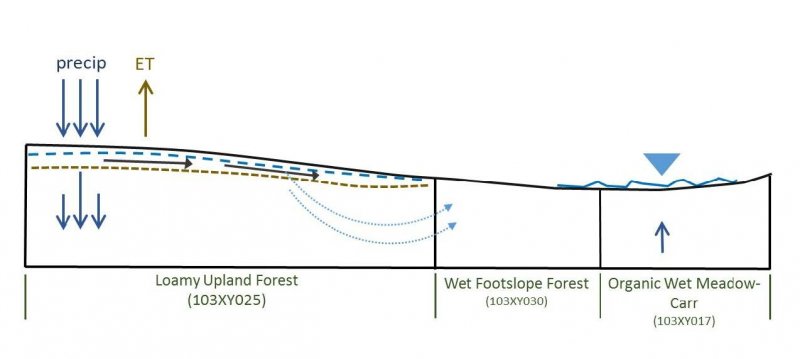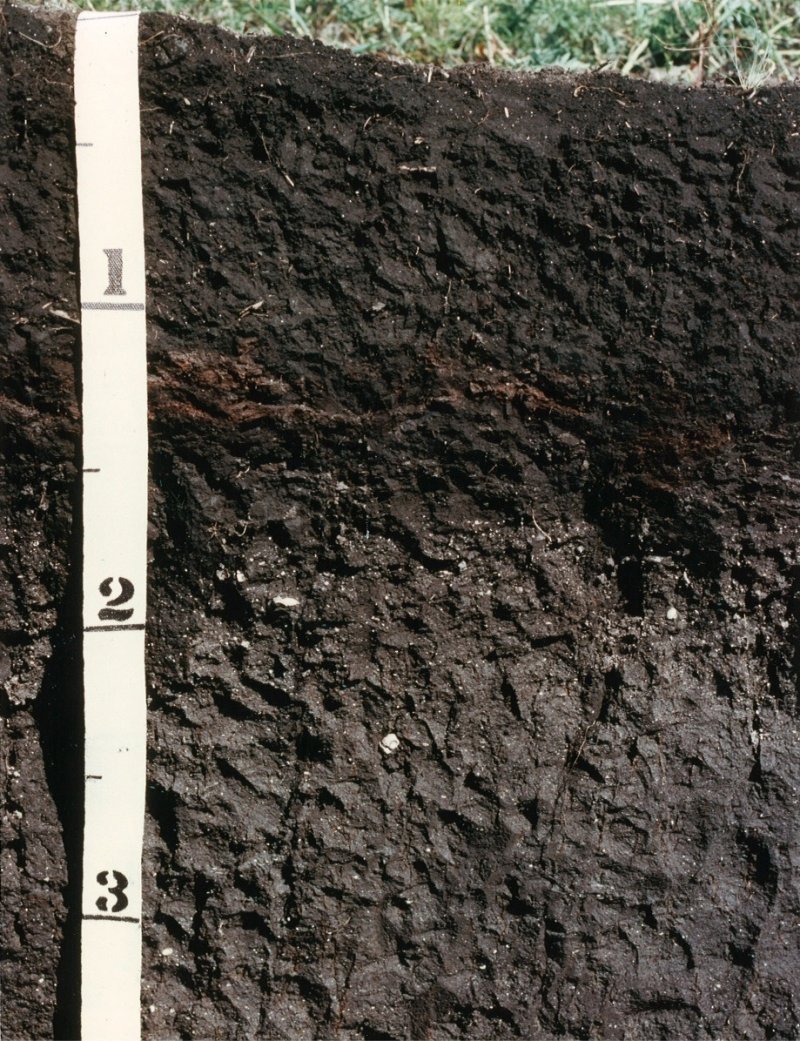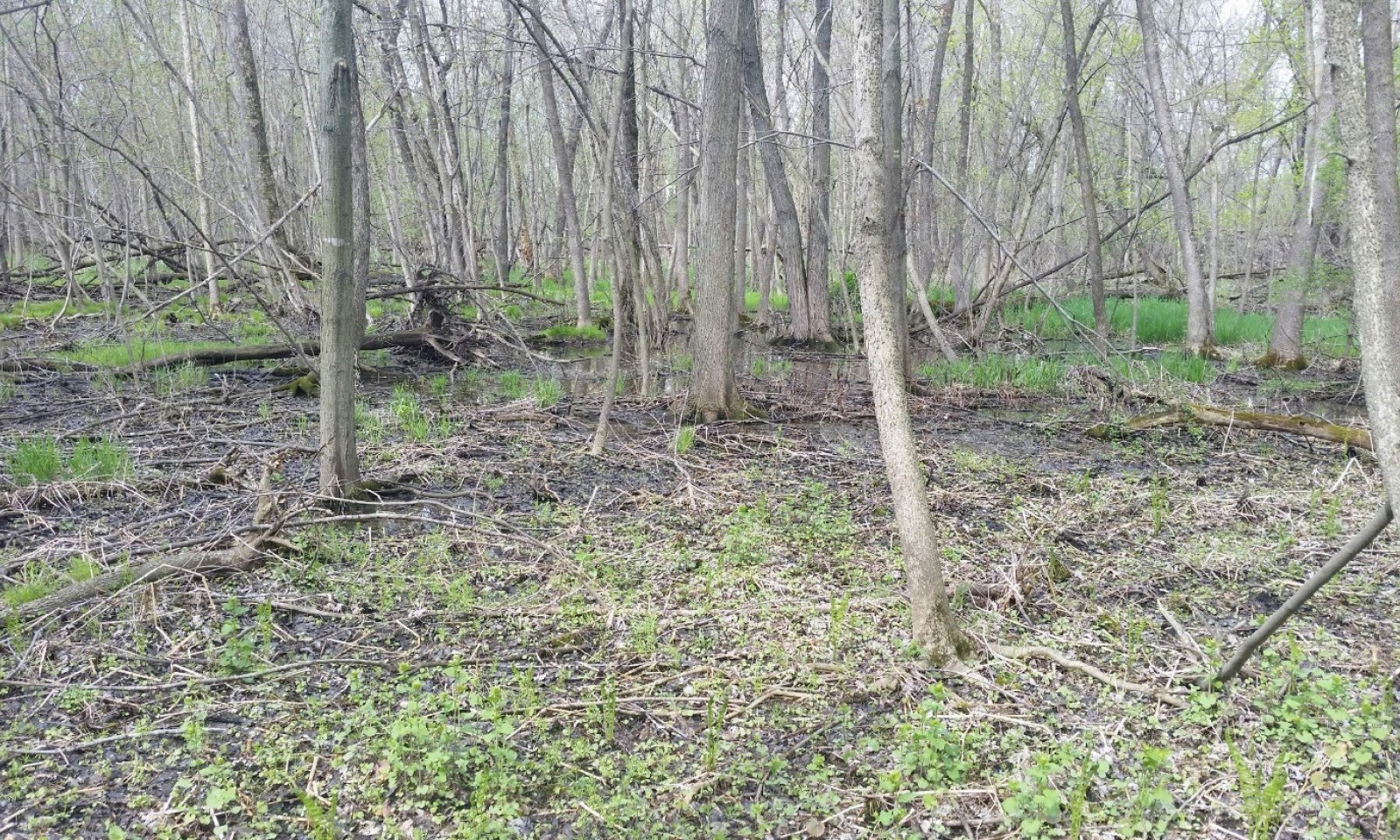

Natural Resources
Conservation Service
Ecological site R103XY017MN
Organic Wet Meadow/Carr
Last updated: 10/04/2023
Accessed: 12/21/2025
General information
Provisional. A provisional ecological site description has undergone quality control and quality assurance review. It contains a working state and transition model and enough information to identify the ecological site.
MLRA notes
Major Land Resource Area (MLRA): 103X–Central Iowa and Minnesota Till Prairies
MLRA 103 is in Minnesota (56 percent) and Iowa (44 percent) and consists of approximately 18 million acres. It is in the Western Lake Section of the Central Lowland Province of the Interior Plains in an area known as the "Des Moines Lobe" of the Wisconsin-age ice sheet. The MLRA is mostly on a young, nearly level to gently rolling, glaciated till plain that has moraines and glacial lake plains in some areas. The plain is covered with glacial till, outwash, and glacial lake deposits. Recent alluvium consisting of clay, silt, sand, and gravel fill the bottoms of most of the major river valleys. Paleozoic bedrock sediments, primarily shale and limestone, underlie the glacial deposits in most of the area.
The annual precipitation increases from northwest to southeast. Most of the rainfall occurs as high-intensity, convective thunderstorms during the summer. Two-thirds or more of the precipitation falls during the freeze-free period. Snowfall is common in winter. Ground water supplies are adequate for the domestic, livestock, municipal, and industrial needs. Nearly all of this area is farmland, and about four-fifths is cropland.
Classification relationships
Major Land Resource Area (MLRA): Central Iowa and Minnesota Till Prairies (103) (USDA Handbook 296, 2006)
Subregions: North Central Glaciated Plains Section (251B); Upper Minnesota River-Des Moines Lobe (251BA) Subsections (Cleland et al. 2007)
The reference state shares similarities to Minnesota Department of Natural Resources WMn82 Northern Wet Meadow/Carr
Ecological site concept
The Organic Wet Meadow/Carr ecological site occurs predominantly in the northeastern section of MLRA 103 including parts of the Big Woods ecoregion. The ecology of this site is influenced by landscape position, hydrology, and soils. The landscape positions include linear to slightly concave landforms within depressions. Soils have a high water table (i.e.,endosaturated) and are classified as very poorly drained. Soils in this group are Histosols with high organic matter content that developed in shallow lakes and ponds. This site is ponded in a natural state.
Associated sites
| F103XY030MN |
Wet Footslope/Drainageway Forests The Wet Footslope/Drainageway Forests ecological site is on somewhat poorly drained to poorly drained soils located on base slopes, head slopes, footslopes, toeslopes, and drainageways. |
|---|---|
| F103XY025MN |
Loamy Upland Forests The Loamy Upland Forests ecological site occurs on uplands and on soils which are derived from loamy till and have a thin or moderately thick dark (mollic) surface layer. The drainage class ranges from somewhat poorly drained to well drained. |
| F103XY027MN |
Loamy Wet Forests The Loamy Wet Forests ecological site is located in drainageways or on footslopes, toeslopes and depression. Soils are poorly drained and classified as endosaturated. The site is characterized by a high water table during the spring months and very deep, loamy soils. |
| F103XY028MN |
Clayey Wet Forests The Clayey Wet Forests ecological site occurs on clayey textured soils that have a seasonal depth to soil saturation of 0 to 30 cm. This site is located on concave or linear low-slope areas, but no flooding or ponding usually occurs. |
| F103XY036MN |
Depressional Wet Forests The Depressional Wet Forests ecological site occurs in concave or linear and low slope gradient areas on end, lateral and ground moraines in in northeastern MLRA 103. This site is characterized by a water table that is typically above the soil surface (ponded) during the spring months and may drop to as low as three feet later in the growing season during dry periods. The soils developed under forest vegetation and have a thick accumulation of slope alluvium. |
Table 1. Dominant plant species
| Tree |
(1) Larix laricina |
|---|---|
| Shrub |
Not specified |
| Herbaceous |
(1) Carex lacustris |
Click on box and path labels to scroll to the respective text.
Ecosystem states
| T1A | - | Disturbances alter plant community structure and composition |
|---|---|---|
| R2A | - | Restoration of native plant species and hydrological function |
